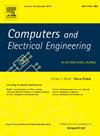Hybrid Mamba-MoE model for non-invasive blood glucose prediction
IF 4
3区 计算机科学
Q1 COMPUTER SCIENCE, HARDWARE & ARCHITECTURE
引用次数: 0
Abstract
Diabetes is a growing global health concern, necessitating accurate and non-invasive blood glucose monitoring solutions. Traditional glucose measurement methods, such as finger-prick tests and continuous glucose monitoring (CGM) systems, pose challenges related to patient adherence, discomfort, and cost, highlighting the need for advanced AI-driven alternatives. This study proposes a hybrid Mamba-MoE model, integrating State Space Models (SSM) and Mixture of Experts (MoE) architectures, to enhance the accuracy, robustness, and real-time feasibility of Photoplethysmography (PPG)-based blood glucose prediction. The methodology involves PPG data acquisition, preprocessing, synthetic signal generation, and model optimization. Wavelet denoising and moving average smoothing techniques were employed to mitigate motion artifacts and noise. At the same time, segmentation, normalization, and temporal feature extraction enhanced the quality and consistency of the PPG signals. A synthetic PPG signal augmentation framework was implemented to address data scarcity and imbalance, utilizing temporal epoch shifting and regression-based glucose interpolation. The Mamba-MoE model was trained and validated using a 5-fold cross-validation approach, ensuring robust performance across diverse patient profiles. Experimental results demonstrate that Mamba-MoE significantly outperforms traditional machine learning and deep learning models, achieving Zone A accuracy of 98.16% and a low RMSE of 7.99, making it a strong candidate for real-time, wearable glucose monitoring applications. The study underscores the potential of AI-driven hybrid models in improving non-invasive diabetes management while addressing clinical reliability, scalability, and computational efficiency. Future research should focus on expanding dataset diversity, integrating multimodal physiological signals, and optimizing computational efficiency for real-world deployment. By advancing AI-powered non-invasive glucose monitoring, this study paves the way for a more accessible, accurate, and patient-friendly approach to diabetes management.
用于无创血糖预测的混合Mamba-MoE模型
糖尿病是一个日益严重的全球健康问题,需要准确和非侵入性的血糖监测解决方案。传统的血糖测量方法,如手指点刺试验和连续血糖监测(CGM)系统,带来了与患者依从性、不适和成本相关的挑战,突出了对先进的人工智能驱动替代方案的需求。本研究提出了一种混合Mamba-MoE模型,整合状态空间模型(SSM)和专家混合模型(MoE)架构,以提高基于光容积脉搏波(PPG)的血糖预测的准确性、鲁棒性和实时可行性。该方法包括PPG数据采集、预处理、合成信号生成和模型优化。采用小波去噪和移动平均平滑技术消除运动伪影和噪声。同时,对PPG信号进行分割、归一化和时间特征提取,提高了信号的质量和一致性。利用时间历元移位和基于回归的葡萄糖插值,实现了一个合成的PPG信号增强框架,以解决数据的稀缺性和不平衡性。使用5倍交叉验证方法对Mamba-MoE模型进行了训练和验证,确保了在不同患者情况下的稳健性能。实验结果表明,Mamba-MoE显著优于传统的机器学习和深度学习模型,达到了98.16%的A区准确率和7.99的低RMSE,使其成为实时可穿戴血糖监测应用的有力候选。该研究强调了人工智能驱动的混合模型在改善非侵入性糖尿病管理方面的潜力,同时解决了临床可靠性、可扩展性和计算效率问题。未来的研究应侧重于扩大数据集的多样性,整合多模态生理信号,并优化计算效率以适应现实世界的部署。通过推进人工智能驱动的无创血糖监测,本研究为更容易获得、更准确、更有利于患者的糖尿病管理方法铺平了道路。
本文章由计算机程序翻译,如有差异,请以英文原文为准。
求助全文
约1分钟内获得全文
求助全文
来源期刊

Computers & Electrical Engineering
工程技术-工程:电子与电气
CiteScore
9.20
自引率
7.00%
发文量
661
审稿时长
47 days
期刊介绍:
The impact of computers has nowhere been more revolutionary than in electrical engineering. The design, analysis, and operation of electrical and electronic systems are now dominated by computers, a transformation that has been motivated by the natural ease of interface between computers and electrical systems, and the promise of spectacular improvements in speed and efficiency.
Published since 1973, Computers & Electrical Engineering provides rapid publication of topical research into the integration of computer technology and computational techniques with electrical and electronic systems. The journal publishes papers featuring novel implementations of computers and computational techniques in areas like signal and image processing, high-performance computing, parallel processing, and communications. Special attention will be paid to papers describing innovative architectures, algorithms, and software tools.
 求助内容:
求助内容: 应助结果提醒方式:
应助结果提醒方式:


